Analysis of a stop continuum#
[5]
LING 497 Phonetic Analysis: Articulation, Acoustics, Audition
The Pennsylvania State University
Revised
25 May 2023
Programming Environment#
Show code cell source
R.version.string # R.Version()
.libPaths()
packages <- c(
'gridExtra',
'magrittr',
'phonR',
'repr',
'scales',
'tidyverse',
'vowels'
)
# Install packages not yet installed
installed_packages <- packages %in% rownames(installed.packages())
if (any(installed_packages == FALSE)) {
install.packages(packages[!installed_packages])
}
# Load packages
invisible(lapply(packages, library, character.only = TRUE))
── Attaching core tidyverse packages ───────────────────────────────────────────────────────────────────────────────────────────────────────────────────────────────────────────────────────────────────────────────────────────── tidyverse 2.0.0 ──
✔ dplyr 1.1.2 ✔ readr 2.1.4
✔ forcats 1.0.0 ✔ stringr 1.5.0
✔ ggplot2 3.4.3 ✔ tibble 3.2.1
✔ lubridate 1.9.2 ✔ tidyr 1.3.0
✔ purrr 1.0.2
── Conflicts ─────────────────────────────────────────────────────────────────────────────────────────────────────────────────────────────────────────────────────────────────────────────────────────────────────────────── tidyverse_conflicts() ──
✖ readr::col_factor() masks scales::col_factor()
✖ dplyr::combine() masks gridExtra::combine()
✖ purrr::discard() masks scales::discard()
✖ tidyr::extract() masks magrittr::extract()
✖ dplyr::filter() masks stats::filter()
✖ dplyr::lag() masks stats::lag()
✖ purrr::set_names() masks magrittr::set_names()
ℹ Use the conflicted package (<http://conflicted.r-lib.org/>) to force all conflicts to become errors
Measuring VOT along the [pa]-[ba] stimulus continuum#
Show code cell source
vot <- tribble(
~stimulus,~vot_ms,
'pa', 0.072,
'pa1', 0.061,
'pa2', 0.050,
'pa3', 0.039,
'pa4', 0.028,
'pa5', 0.017,
'pa6', 0.006,
'ba', -0.084
)
vot
| stimulus | vot_ms |
|---|---|
| <chr> | <dbl> |
| pa | 0.072 |
| pa1 | 0.061 |
| pa2 | 0.050 |
| pa3 | 0.039 |
| pa4 | 0.028 |
| pa5 | 0.017 |
| pa6 | 0.006 |
| ba | -0.084 |
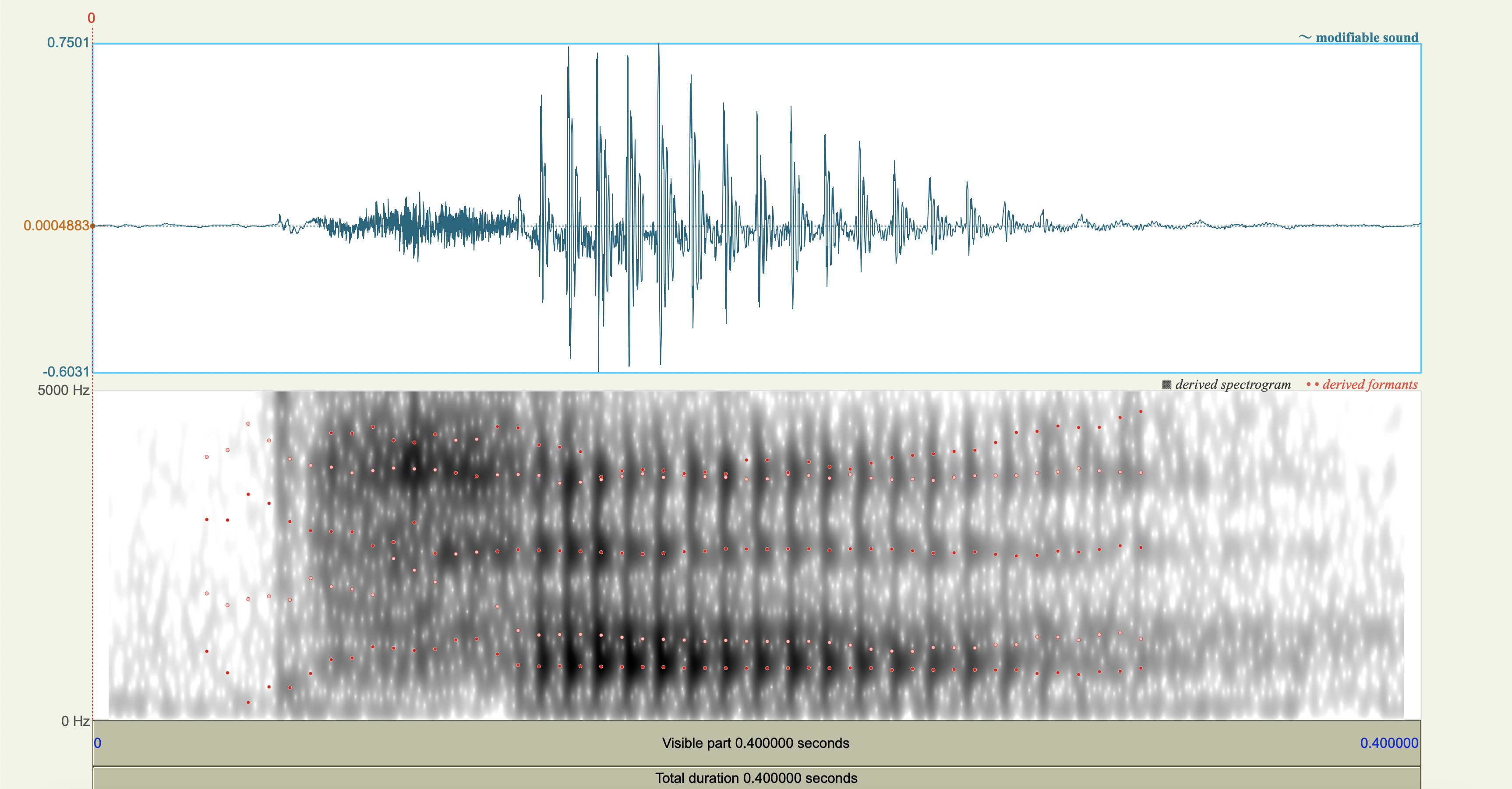
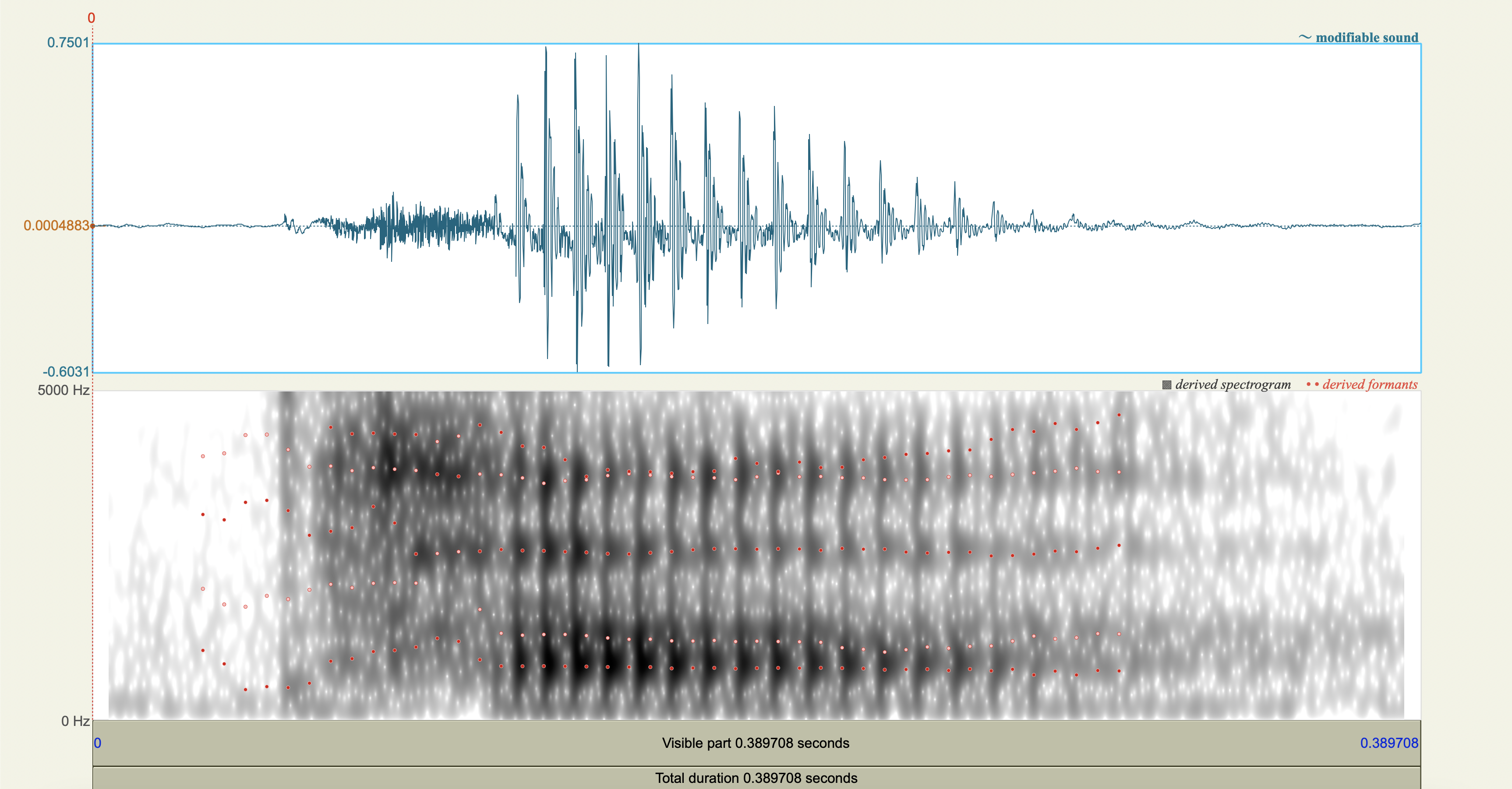

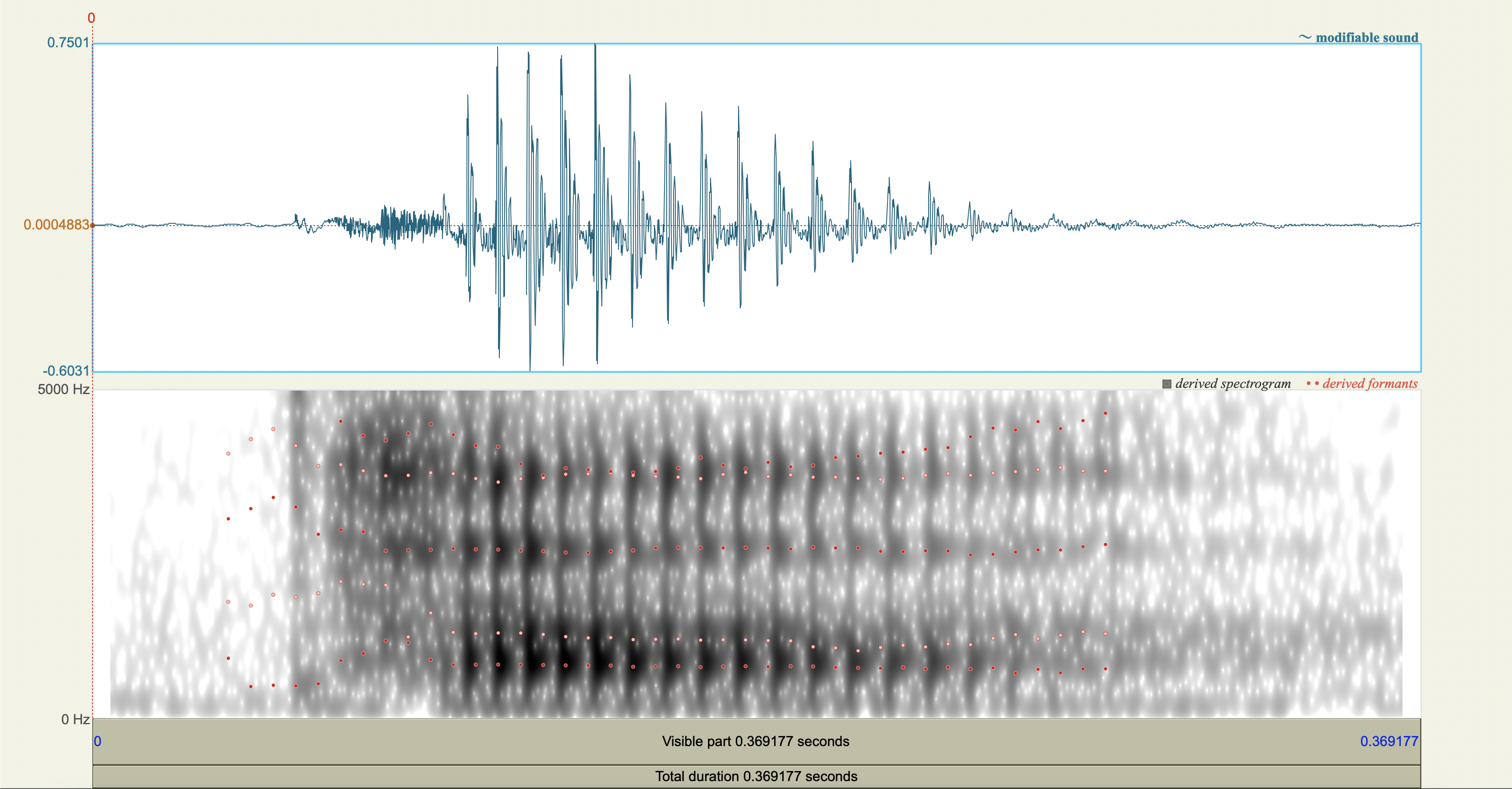


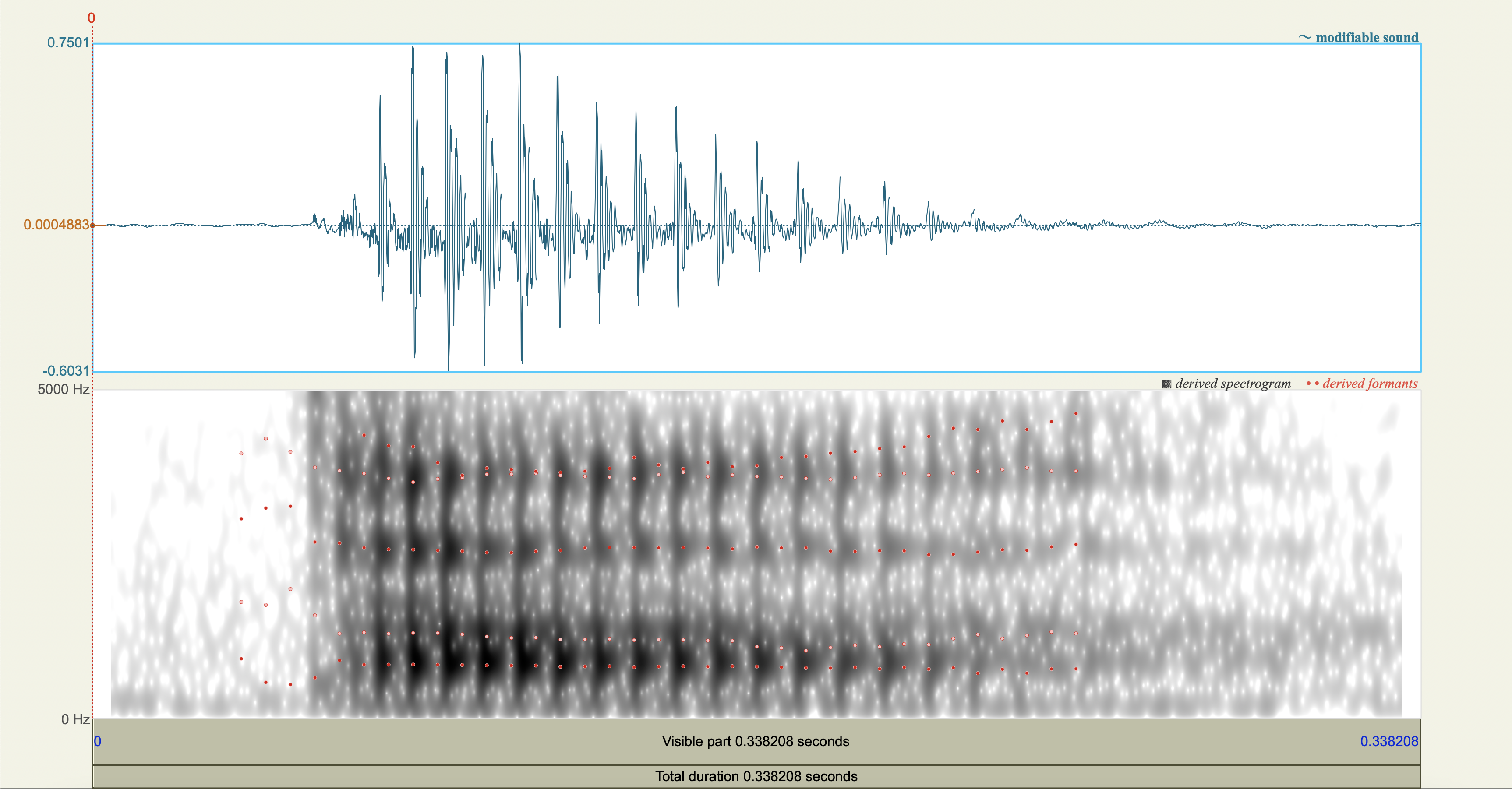
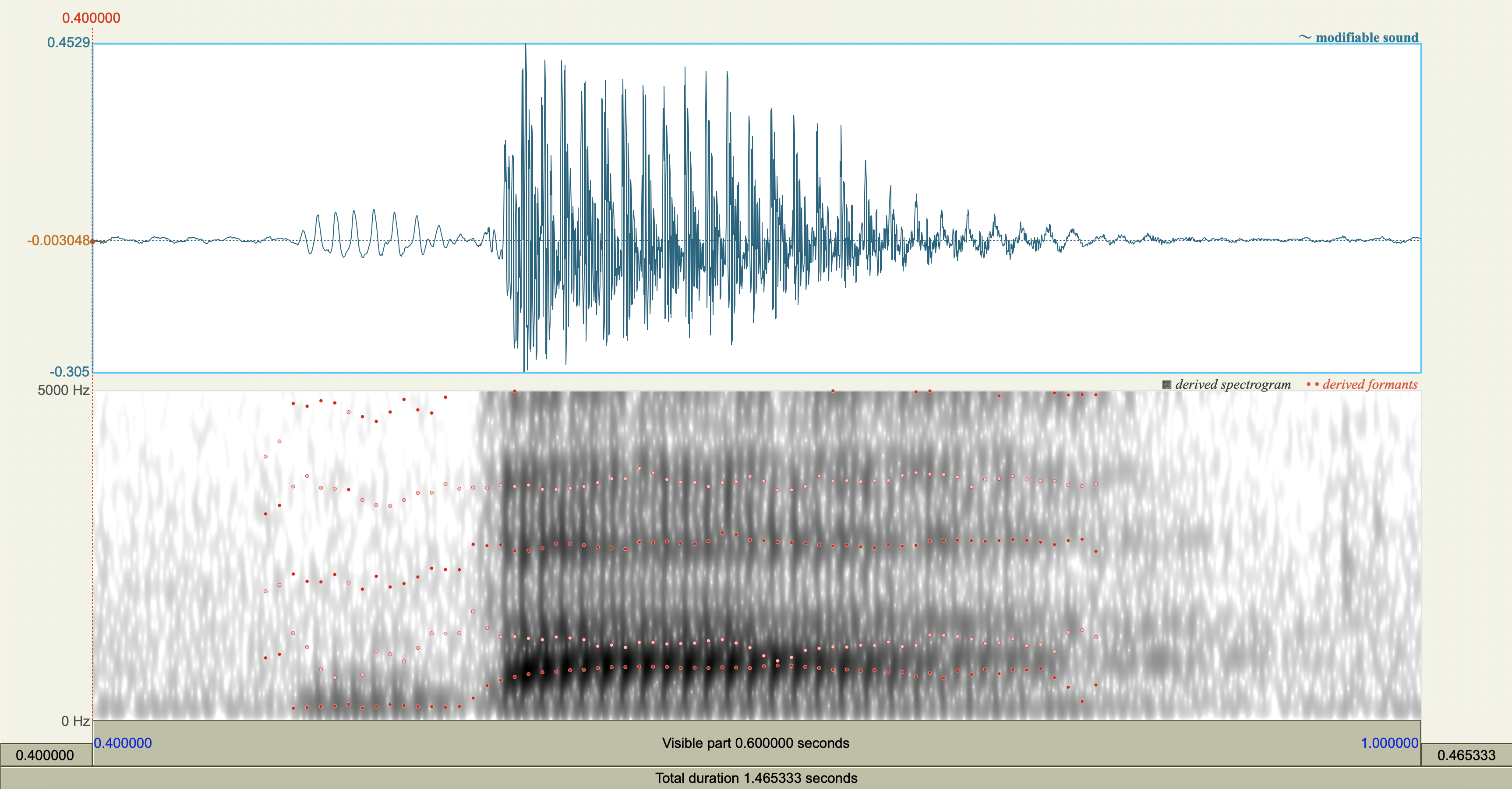
[1] Which of your tokens sounds the most like your natural [b]?
The last token in the sequence of [pa] stimuli, with increasing amounts of aspiration artificially cut from the original, sounds the most like natural [ba].
[2] Why do you think your artificial [b] sounds different from the natural [b], if it does?
The artificial token may not sound exactly like the natural one because it lacks the negative VOT–or pre-nasalization–that the natural token has. Closure length and vowel duration may also serve as cues that the auditory system perceives and categorizes along the voiced-voiceless dimension.
Vowel length manipulation#
Show code cell source
# vowel length
vl <- tribble(
~vowel,~length_ms,
'lab', 0.355956,
'lap', 0.187661,
)
vl
| vowel | length_ms |
|---|---|
| <chr> | <dbl> |
| lab | 0.355956 |
| lap | 0.187661 |
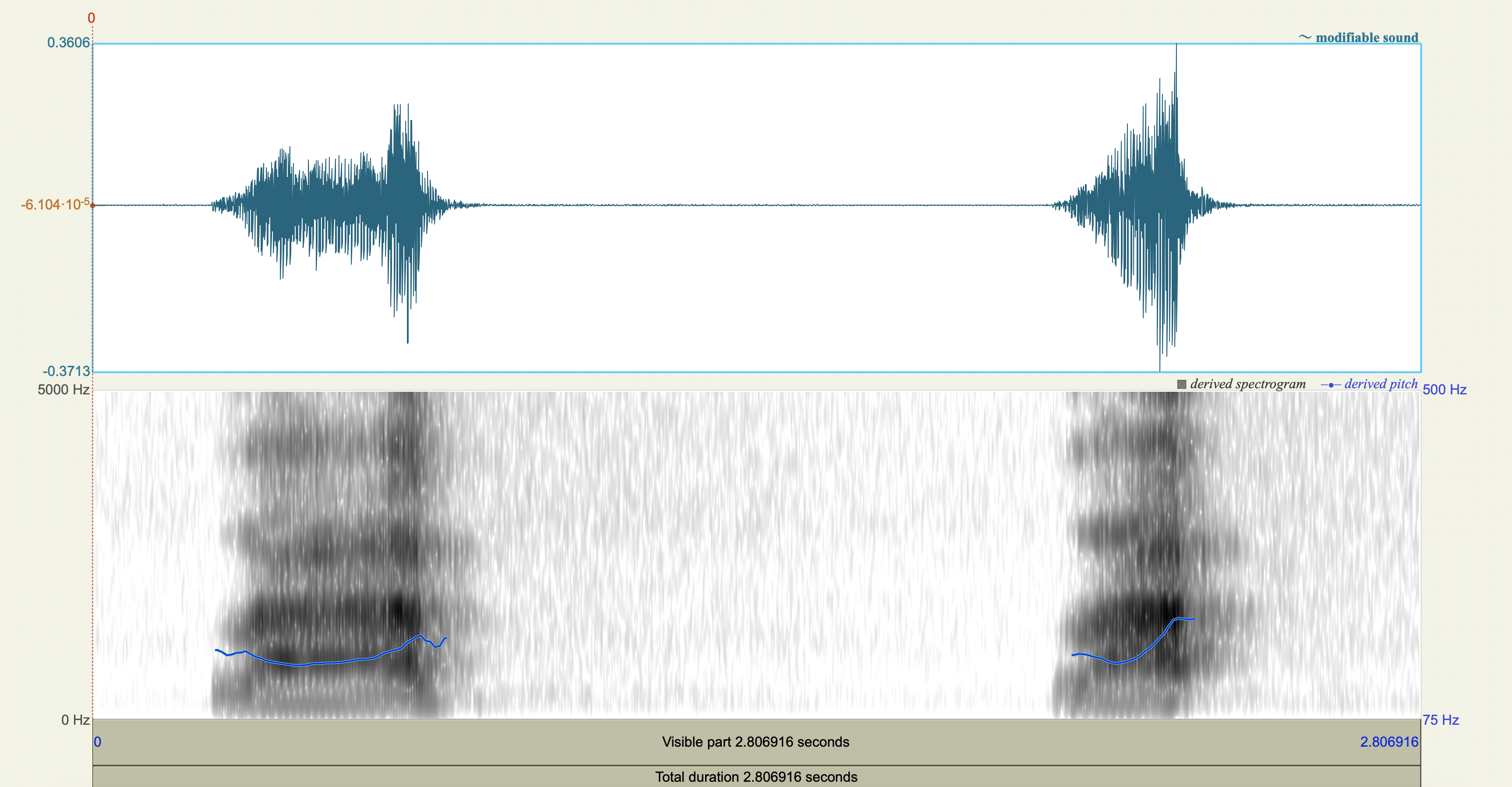
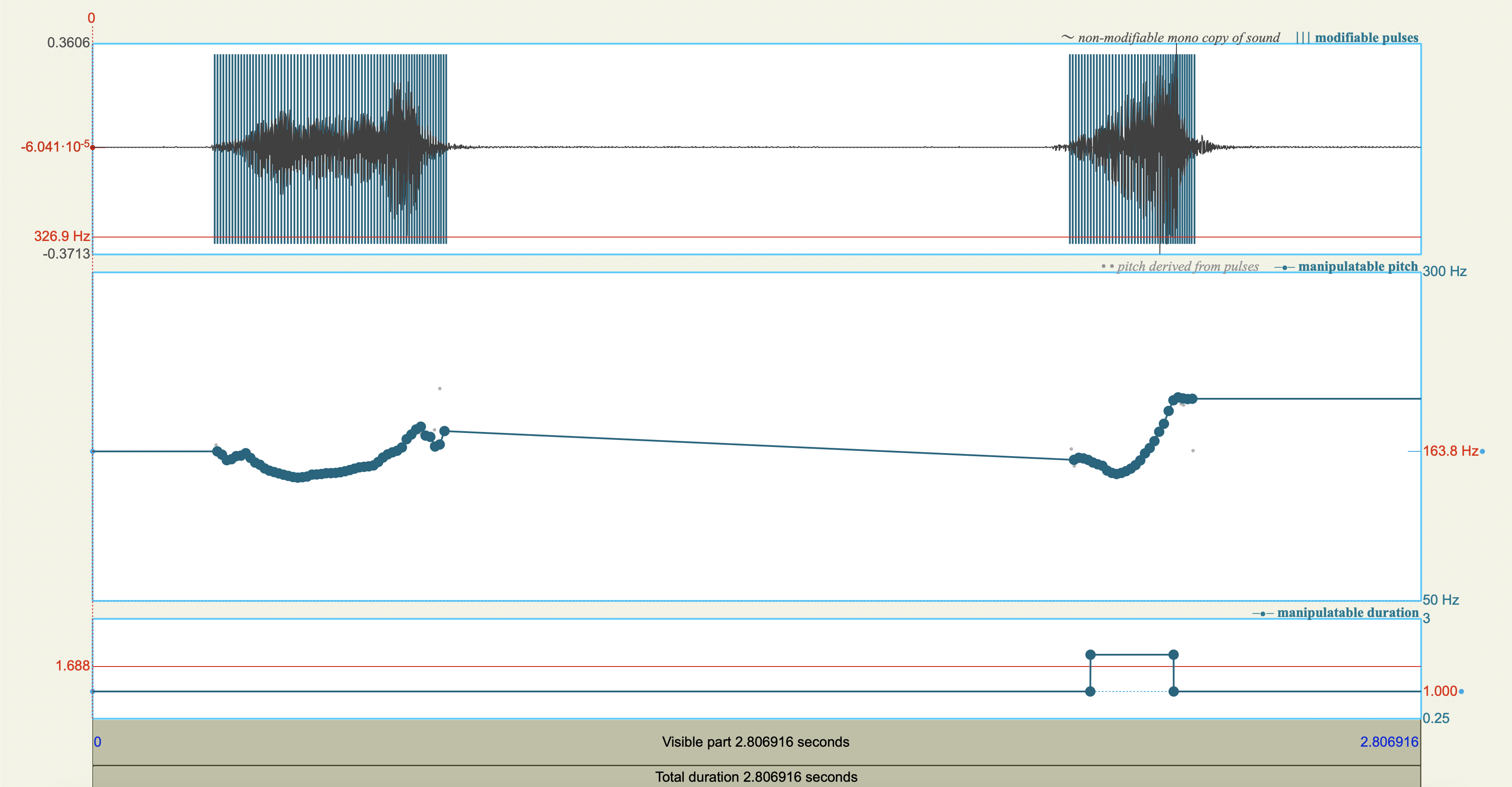
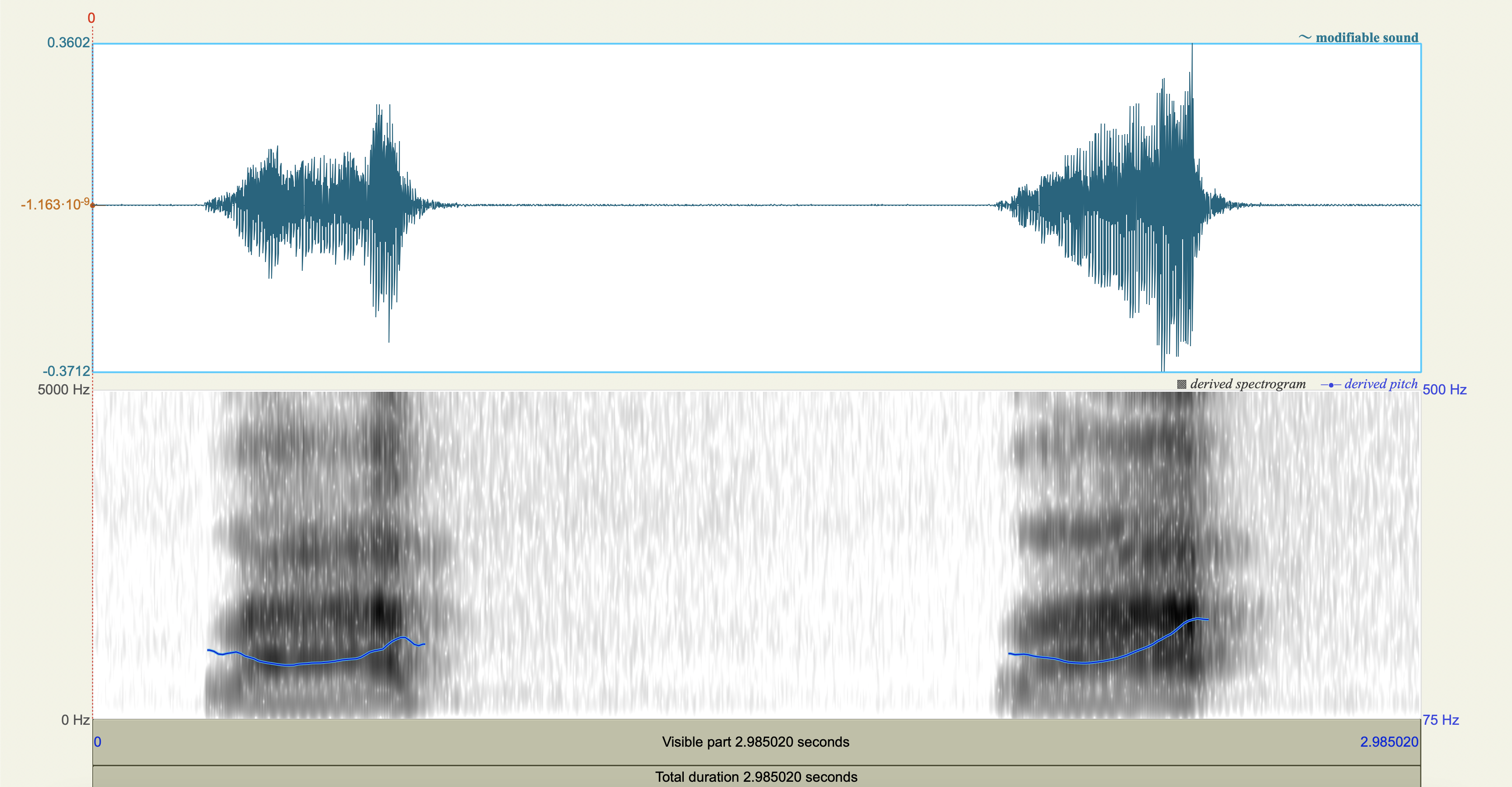
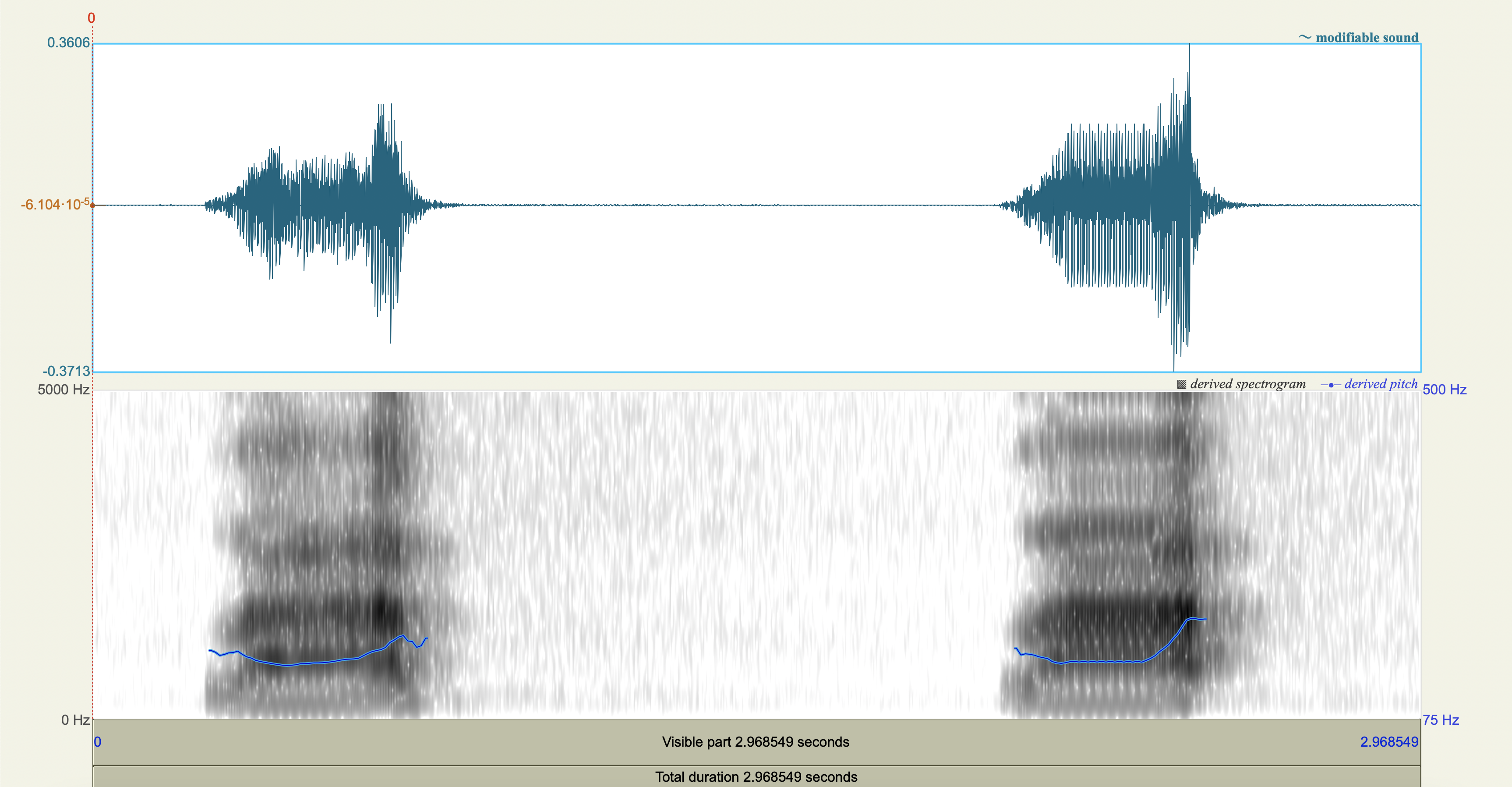
Which of the two vowel length manipulations do you think produced the most natural-sounding result? Why do you think it was better?
Praat’s manipulation function produced a more natural-sounding result than simply copy-pasting a sound clip. Based on a comparison of the spectrograms of the two results, it can be seen that Praat’s function utilizes an algorithm that genuinely lengthens the continuously chaning sound; on the other hand, the copy-paste approach cuts into the continuous shape of the original speech sound with fixed values for all the relevant properties, including the formants, pitch, phonation, etc.
Terms#
[W] Voice Onset Time (VOT)